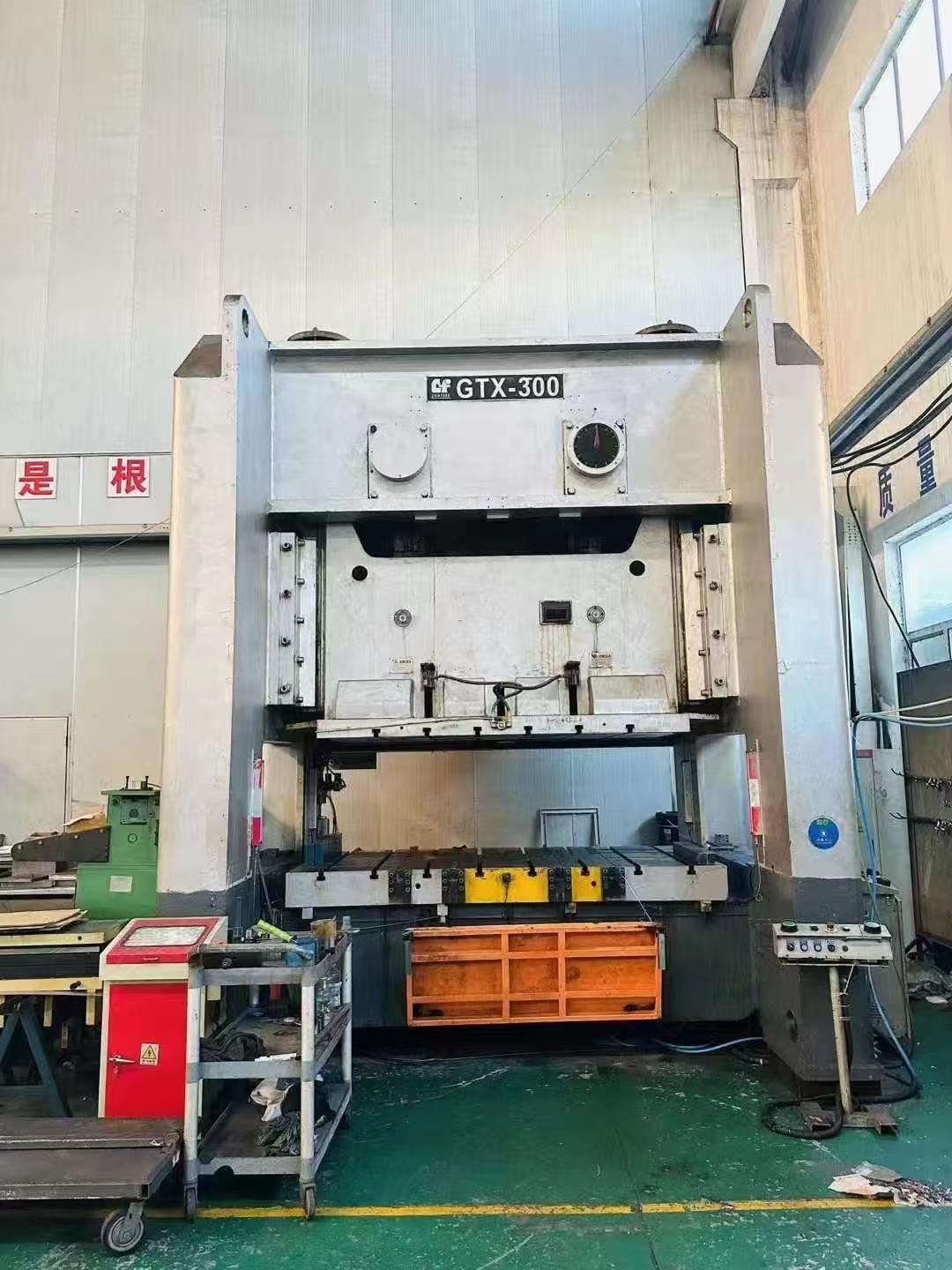How to maintain and upkeep second-hand punching machines?
Mainly maintain and upkeep second-hand punching machines from the following aspects:
1. Maintenance of mechanical components
Body and Workbench
-Regularly clean the surface of the machine body and workbench to remove impurities such as dust, oil, and metal shavings. Clean cloths and appropriate cleaning agents can be used for wiping. Keeping the body and workbench clean helps prevent impurities from entering the interior of mechanical components, reducing wear and corrosion.
-Check if the connection between the body and the workbench is loose. Regularly use tools such as wrenches to check and tighten bolts and nuts to ensure a secure connection. Loose connections may cause vibration and displacement of the punch during operation, affecting stamping accuracy.
Sliding block and guide rail
-The slider and guide rail are key moving parts of the punch press and require special maintenance. Regularly apply an appropriate amount of lubricating oil on the surface of the guide rail, and it is recommended to use high-quality guide rail lubricating oil. Lubricating oil can reduce friction between the slider and the guide rail, reduce wear, and also have a certain rust prevention effect.
-Check if the gap between the slider and the guide rail is normal. If the gap is too large, it will affect the motion accuracy and stability of the slider. Tools such as feeler gauges can be used for measurement, and the gap should generally be controlled within the specified range, such as less than 0.1mm. If the gap is too large, it is necessary to adjust or replace worn parts in a timely manner.
Crankshaft and connecting rod
-The crankshaft and connecting rod are important components for transmitting power. Regularly inspect the wear of the crankshaft and connecting rod, and observe whether there are scratches, wear marks, or fatigue cracks on the surface. Testing can be carried out using equipment such as flaw detectors. For slightly worn parts, grinding repair can be carried out; If there is severe wear or cracking, the components should be replaced in a timely manner.
-Keep the lubricating oil in the crankcase clean and sufficient. According to the equipment manual, regularly replace the lubricating oil, usually every 3-6 months. Clean lubricating oil can effectively lubricate the bearings and other parts of the crankshaft and connecting rod, reducing wear and heat generation.
2. Electrical system maintenance
Motor and control cabinet
-Regularly clean the dust on the surface of the motor and control cabinet. Dust accumulation may cause poor heat dissipation of electrical components, leading to malfunctions. You can use a hair dryer or soft bristled brush for cleaning.
-Check if the wiring of the motor is secure and if there are any signs of looseness, burning, or damage. At the same time, check the insulation performance of the motor and use an insulation resistance meter to measure the insulation resistance of the motor winding, which should generally not be lower than 0.5M Ω. For the control cabinet, check the working status of internal electrical components such as relays, contactors, and circuit breakers to ensure that they are properly connected and disconnected.
Sensors and buttons
-The sensors of the punch press, such as limit sensors, pressure sensors, etc., are crucial for the safety and normal operation of the equipment. Regularly check the functionality of the sensor to ensure that it can accurately detect signals. You can use tools such as a multimeter to check if the output signal of the sensor is normal.
-Check the flexibility and reliability of operation buttons (such as start, stop, emergency stop buttons, etc.). The button should be able to be pressed and popped up normally, with good contact. If the button is found to be stuck or has poor contact, it should be replaced in a timely manner.
3. Maintenance of lubrication system
Lubrication method and oil quality selection
-Understand the lubrication methods of punching machines, commonly including manual lubrication and automatic lubrication. For manually lubricated punching machines, it is necessary to strictly follow the specified time and location for lubrication, and use appropriate lubricating oil. For automatic lubrication systems, regularly check whether components such as oil pumps, oil pipes, and oil nozzles are working properly.
-Choose the appropriate lubricating oil according to the working environment and requirements of the punch press. Generally speaking, lubricating oil with good wear resistance, oxidation resistance, and rust prevention properties should be selected. Punching machines working in high-temperature environments can choose high-temperature resistant lubricating oil; Choose lubricating oil with anti-corrosion properties in environments with corrosion risks.
Lubrication cycle and oil level inspection
-Determine a reasonable lubrication cycle. In general, a small amount of lubrication should be applied to key parts (such as slider guide rails, crankshaft bearings, etc.) before starting up each day; Comprehensive lubrication should be carried out once a week or every two weeks, and the specific cycle can be adjusted appropriately according to the frequency and intensity of equipment use.
-Regularly check the oil level of the lubricating oil tank to ensure that the oil level is within the specified range. Insufficient oil can lead to poor lubrication and accelerate component wear; Excessive oil volume may cause leaks and waste. The oil level can be checked through an oil level gauge or observation hole.
4. Mold installation and maintenance
Mold Installation Specification
-Before installing the mold, ensure that the punch slide is at the top dead center position and clean the installation table of the mold and punch. According to the installation instructions of the mold, correctly install the mold on the punch worktable and fix it with appropriate bolts and locating pins. During the installation process, attention should be paid to the direction and position of the mold to ensure that it matches the punching action of the punch press.
-Adjust the closing height of the mold to match the stroke of the punch press. Usually achieved by adjusting the height of the slider, which can be fine tuned using tools such as adjusting screws. Inappropriate closure height can lead to mold damage or substandard quality of stamped parts.
Mold maintenance and replacement
-Regularly inspect the wear of the mold, including the cutting edge, cavity, and other parts. For worn cutting edges, they can be repaired through grinding; If the mold cavity is severely deformed or damaged, the mold should be replaced in a timely manner. After stamping a certain number of workpieces (such as every 1000-5000 pieces, depending on the situation of the mold and workpiece), clean and maintain the mold to remove metal shavings and oil stains on the surface of the mold.
5. Maintenance of safety devices
Protective fence and light curtain
-Check the integrity and firmness of the protective fence. The railing of the protective fence should be free of deformation or breakage, and the connection parts should be firm and reliable. Regularly clean the surface of the protective fence, remove oil and dust, and maintain clear visibility. For the light curtain safety device, check whether the light emitting and receiving components of the light curtain are working properly, and whether there is any obstruction or damage. It is possible to test whether the punch can immediately stop running by blocking the light curtain to ensure the sensitivity and reliability of the light curtain.
Emergency stop button
-Regularly check the function of the emergency stop button. Press the emergency stop button and check if the punch can quickly stop running, and if the control system of the punch can reset normally after the button is pressed. Ensure that the position of the emergency stop button is easily accessible to operators in emergency situations, and there are no obstacles around it.



